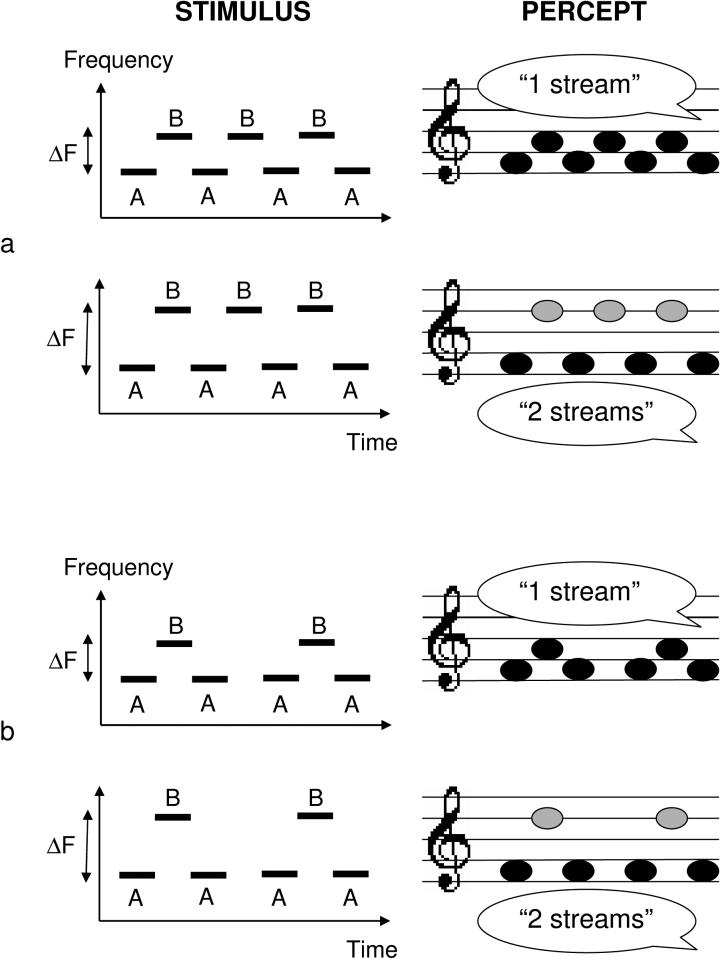Figure 1.
Schematic representation of the stimuli commonly used to study sequential auditory streaming and of the corresponding auditory percepts. The stimulus (left) is a temporal sequence of pure tones alternating between two frequencies, represented here and in the text by the letters A and B. The A-B frequency difference (ΔF) is either small (top left panel) or large (bottom left panel). In the former case, the percept is that of a single, coherent stream of tones alternating in pitch. In the latter case, the percept is that of two separate streams of tones; since the tones in each stream have a constant frequency, the sense of pitch alternation is lost.

